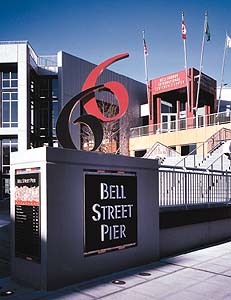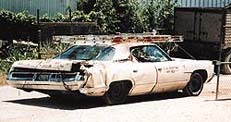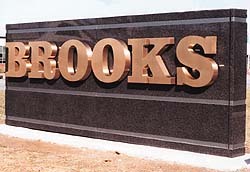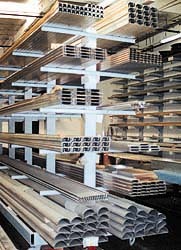Metal Fabrication
Following Through
Sign pros don’t drop the ball
Published
18 years agoon

During the past 30 years, I’ve heard a variety of gripes about sign-company performance. It’s certainly humbling when you approach a prospective customer and he warns, "If you’re from a sign company, I don’t even want to talk to you." This cynicism isn’t restricted to sign users. If you speak with fellow sign professionals, you’re bound to hear stories, both accurate and exaggerated, about the contemptible business practices of Competitor X or Competitor Z.
These tales create the erroneous impression that sign companies are somehow less professional than other types of businesses. As ST cartoonist Justin Green proficiently illustrates in his "Sign Game" comics, certain customer complaints are inescapable features of the sign professional’s territory. These inherent gripes arise from flawed initial concepts (frequently dictated or confounded by customers) or miscommunications between sign-makers and clients.
What separates sign professionals from pretenders, however, is the knowledge that sign design, production, installation and maintenance represent inseparable components of the customer’s overall experience. Thus, if the right hand doesn’t know what the left hand is doing, trouble awaits. As golf pros frequently observe, "You’ve got to follow through."
The holistic view
If you bought a new car, drove it for two years, and the paint peeled off, you could reasonably expect the dealer or manufacturer to correct the problem free of charge. Likewise, if you brought your new car home one day but couldn’t start the engine the next morning, you’d also expect satisfaction from the seller. Customers expect no less from sign builders, but they are frequently disappointed. Because signs are custom-made products, and sign companies typically are small businesses, sign warranties are not as well established as guarantees for consumer products. Another factor that complicates customer service is the increasing fragmentation of sign production, installation and maintenance into specialties performed by different companies. It’s difficult to guarantee results when two or three independent parties affect the quality of a finished product.
If your company manufactures signs, but doesn’t install or maintain them, quality control can easily get away from you. Construction techniques that are cost-effective or expedient for manufacturers might not ensure product durability in the field. Thus, quality sign builders grasp how design and construction impact installation and maintenance. Conversely, those who fabricate inferior products are typically unaware or unconcerned about what happens after signs leave the factory. This negligence complicates projects for installers and maintenance mechanics, resulting in less-than-desirable results.
Even when sign builders create high-quality products, they should be involved in decisions affecting the quality of installation and maintenance. A well-made sign that deteriorates prematurely because of poor installation or maintenance is no better in a customer’s eyes than a poorly built sign. Despite the fact that a third party may be to blame, the client judges the sign builder guilty by association. Thus, the astute sign professional is concerned with every stage of the product’s life. Hence, when a sign builder subcontracts erection and maintenance, feedback from installers and service mechanics is invaluable.
The key ingredients that create customer satisfaction are as follows:
Graphic design effectiveness: An attractive, highly visible scheme of colors and text is the foundation of a sign’s value. In many cases, the initial graphic concept determines which competing proposal a client accepts. Hence, sign professionals properly invest substantial resources in personnel and equipment for design and production. If the visual effect fails, nobody cares how well built, installed or maintained the sign might be.
Sign placement: Location is crucial, because it dictates the graphic design’s ultimate impact. Preliminary site surveys for new signs are essential, particularly for quantity sign programs. These surveys must verify all physical dimensions of the subject properties, buildings and abutting highways. Always check local sign codes to determine what types of signs may or may not be feasible.
Instead of trying to make a certain size or type of sign fit every location, the quality sign builder develops various versions of the customer’s sign to permit installation in diverse locations. Thus, the builder might produce a freestanding sign, a wall-projecting sign, a flat wall sign and a pole-projecting sign ("flag sign") for the same client. Certain unique locations demand custom designs (for example, cubical or triangular signs). Design flexibility is not only necessary to allow various placements, but also to conform to municipal sign codes.
When applying for sign permits, it’s important for sign professionals to be aggressive (but not abrasive) regarding sign visibility. If local regulations dictate a sign that is too small or too low for effective viewing, the sign professional should advise his client to pursue a zoning variance. If successful, this appeal not only yields a more-satisfied customer, but also affords the sign builder a better venue for displaying his craftsmanship. A beautiful, well-placed sign is as much an advertisement for the builder as for the user.
Structural and electrical design: Fabrication is a vital element in customer satisfaction. Structural durability and lighting layout are crucial to prevent a sign that looks gorgeous on the shop floor from becoming hideous in the field. Poor structural or electrical designs lead to chronic maintenance problems and potential safety hazards that alienate customers. The sign builder should always keep in mind that a product that is difficult to install and repair is more likely to be abused and degraded.
Durability of components: Essential for quality products, component selection can also provide a competitive edge. For example, your decision to substitute a break-resistant plastic for standard acrylic might save your customer the expense of replacing a damaged face panel in the future. Likewise, fastening socket raceways securely to prevent poor lamp contact gives your customer a product that lasts longer and is less expensive to maintain. Watertight sign cabinets with proper ballast or transformer placements also add value. When you educate customers about the long-term benefits, these features become important selling points, not just higher production costs.
Quality of installation and maintenance: This is one of the most frequently neglected factors in the customer-satisfaction equation. Who installs and repairs the signs your company builds? If you’re not involved in this decision, third parties may give your company a bad name. Quantity sign builders should work with their clients to ensure that the people who install and maintain their signs are competent. The sign manufacturer should furnish written guidelines for installation and maintenance procedures. Also, work-order checklists and spot checks of completed jobs are useful tools to verify the subcontractor’s performance. It’s not easy for a major sign manufacturer to monitor hundreds of installation and maintenance projects, but this has a significant impact on customer satisfaction. In fact, some major sign buyers have canceled lucrative contracts with manufacturers because of poor installation and service.
The ‘Nuts and Bolts’ challenge
Despite its many benefits, computerized sign production fosters the illusion that the sign business is quick and easy. Thus, a vinyl signshop might sell signs on a cash-and-carry basis without knowing who installs the signs, where they are being installed, or whether the customers can obtain sign permits. Electric-sign production also has become increasingly automated, and it’s more common today for manufacturers to subcontract installation and maintenance work.
In a highly competitive business, the sign builder who understands and successfully manages each stage of the production process enjoys a distinct advantage. Those who grasp the big picture of customer satisfaction find their rewards in substantial customer loyalty and high-quality reputations. The challenge is to eliminate the "buts" in your client’s appraisal of his overall signage experience. You’re on the right track when your customers don’t make any of the following remarks:
SPONSORED VIDEO
Introducing the Sign Industry Podcast
The Sign Industry Podcast is a platform for every sign person out there — from the old-timers who bent neon and hand-lettered boats to those venturing into new technologies — we want to get their stories out for everyone to hear. Come join us and listen to stories, learn tricks or techniques, and get insights of what’s to come. We are the world’s second oldest profession. The folks who started the world’s oldest profession needed a sign.
You may like
Advertisement
Subscribe

Magazine
Get the most important news
and business ideas from Signsofthetimes Magazine.
Advertisement
Most Popular
-

 Tip Sheet3 days ago
Tip Sheet3 days agoAlways Brand Yourself and Wear Fewer Hats — Two of April’s Sign Tips
-

 Business Management1 week ago
Business Management1 week agoWhen Should Sign Companies Hire Salespeople or Fire Customers?
-

 Women in Signs2 weeks ago
Women in Signs2 weeks ago2024 Women in Signs Award Winners Excel in Diverse Roles
-

 Real Deal4 days ago
Real Deal4 days agoA Woman Sign Company Owner Confronts a Sexist Wholesaler
-

 Editor's Note1 week ago
Editor's Note1 week agoWhy We Still Need the Women in Signs Award
-

 Line Time2 weeks ago
Line Time2 weeks agoOne Less Thing to Do for Sign Customers
-

 Product Buying + Technology1 week ago
Product Buying + Technology1 week agoADA Signs and More Uses for Engraving Machines
-

 Women in Signs4 days ago
Women in Signs4 days ago2024 Women in Signs: Megan Bradley














